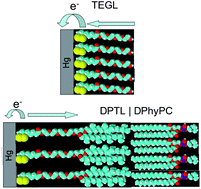Partial charge transfer and surface dipole potential of the Hg–S bond layer at thiol monolayers tethered to mercury
Abstract
The surface dipole potential χSAM due to the molecules of a monolayer self-assembled on a

* Corresponding authors
a
Department of Chemistry, Florence University, Via della Lastruccia 3, Sesto Fiorentino, Firenze, Italy
E-mail:
guidelli@unifi.it
Fax: +39 055-457-3385
Tel: +39 055-457-3097
The surface dipole potential χSAM due to the molecules of a monolayer self-assembled on a

 Please wait while we load your content...
Something went wrong. Try again?
Please wait while we load your content...
Something went wrong. Try again?
R. Guidelli and L. Becucci, Soft Matter, 2012, 8, 3374 DOI: 10.1039/C2SM07051K
To request permission to reproduce material from this article, please go to the Copyright Clearance Center request page.
If you are an author contributing to an RSC publication, you do not need to request permission provided correct acknowledgement is given.
If you are the author of this article, you do not need to request permission to reproduce figures and diagrams provided correct acknowledgement is given. If you want to reproduce the whole article in a third-party publication (excluding your thesis/dissertation for which permission is not required) please go to the Copyright Clearance Center request page.
Read more about how to correctly acknowledge RSC content.
 Fetching data from CrossRef.
Fetching data from CrossRef.
This may take some time to load.
Loading related content
